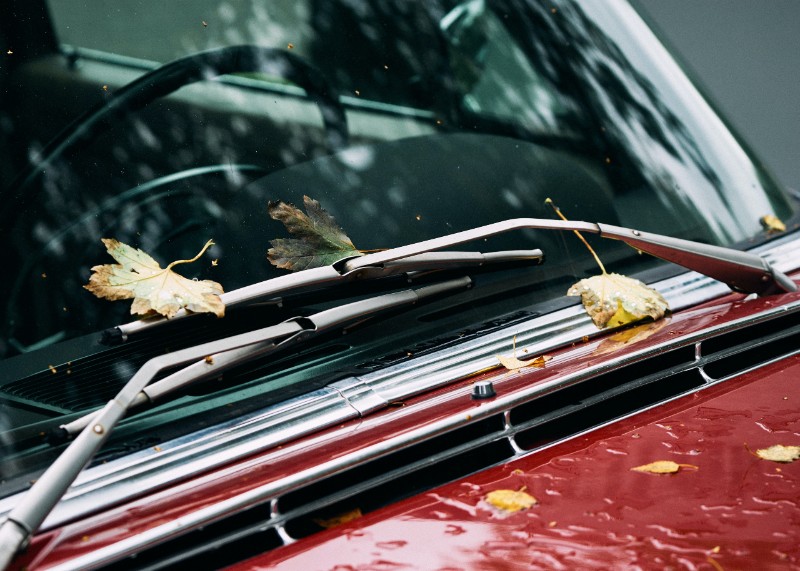The great wiper debate rages on. Some claim it is better to park with the windshield wipers raised. Others believe it should be the other way. You’ve probably seen people use either method. But what is the best position to put your wiper after parking? We look into this and more in this article.
It’s recommended you raise your windshield, especially when parking in cold weather. However, this may not be necessary if you have defrosters in your vehicle.
As you’ll find out in this article, you’ll find out there are both pros and cons of raising your windshield or putting it down. Continue reading to learn more.
Should You Put Your Wipers Up When Parked?
It’s common practice to put windshield wipers up after parking in many areas, especially during winter. The reason for this is simple – low temperatures make the wipers stuck to the windshield. And when you try to activate the windshield after starting the ignition, there’s the risk of damaging the wiper rotor, especially if the temperature is low enough to freeze the wipers to the windshield.
Leaving your windshield up will also save you precious time in winter. Trying to remove the frost from the wiper blades can be somewhat tricky. It’s even worse when you are in a hurry, and chances are you’ll be frustrated having to deal with a frozen wiper blade. Removing frost from the wiper blades can also damage the rubber. This is more likely to happen when you have to chisel the wiper away from the windshield.
It’s also beneficial to raise the wipers in dry weather. This is to prevent dust from settling on the wipers and their surroundings if they were placed on the windshield, as it becomes more difficult to remove the dust and clean the glass if the dust hardens.
Are There Risks To Putting Your Windshield Wipers Up?
In most cases, it’s almost risk-free to put your windshield wipers up. Some argue that the components of the wipers can be destroyed by raising them. However, this isn’t true in most cases, as the internal mechanisms of many wipers aren’t affected by putting them in an upward position. Some manufacturers recommend raising wipers, especially during winter.
The main concern with raising wipers is that they can be hit by debris. And depending on the force and size of the debris, the wipers could be bent in the wrong direction and the internal mechanisms destroyed. When this happens, there’s no choice but to replace the wipers.
There’s also the risk of snapping the wipes when you hit them too hard against the windshield. This is especially true for older make and models of wipers that become very brittle in cold weather.
Raising your wipers could also encourage vandalism. But this largely depends on the area you live in and where you are parking. If your vehicle is parked in your garage or within your compound, it’s more secure, and the risk of vandalism is significantly reduced, if not totally eliminated.

Leaving Wipers Down
Some people don’t just see the logic behind raising the wipers. They believe the wipers should always be down and on the windshield when parked.
There are a couple of benefits to leaving the wipers, and one of these is that it discourages vandalism. But as we mentioned earlier, vandalism may not be a concern depending on where you live and where your automobile is parked.
Another major reason why some people don’t see the logic in raising wipers is the availability of defrosters in modern cars. If you are not familiar with rosters, they are car components that help remove condensation from the windows while melting frost, ice, and snow. They are installed on the windshield and rear window.
Front defrosters help clear the windshield, and they do this by blowing air from the heating and ventilation system through vents to the windshield. So to some people, there’s no reason to raise the windshield when they can easily use the defroster to remove ice and frost.
How to Put Windshield Wipers up on Most Vehicles
Depending on whether your car manufacturer recommends raising your wipers, you can find information on how to put your wipers in “service mode” or “snow mode” in the owner’s manual. If this is the case, you can easily follow the instructions and raise the wipers.
Generally, raising the wipers is a fairly straightforward process. The first step is to switch off the ignition and remove the keys. Then get out of the vehicle and start with the wiper on the passenger side. Then carefully pull the windshield up, making sure to bend it at the hinge. Do the same for the wiper on the driver’s side.
When you are ready to drive, first remove any frost or ice on the windshield. Then, lower the wipers carefully and avoid slapping them against the glass to avoid breaking the wipers if they become too brittle in the cold.
Taking Care Of Your Windshield Wipers
Like any other component of your car, the windshield wipers need to be maintained. You may not rate your wipers much until you need them when there is a downpour. And your wipers can make all the difference and keep you safe in such situations.
Check the owner’s manual for the manufacturer’s recommendation on how often to replace the wiper. Many manufacturers recommend changing the wiper blade every 6 to 12 months for optimum performance.
To increase the longevity of your wipers, avoid wiping against the dirty glass. Also, don’t run your wipers on a dry windshield. Wipers are designed for use in wet conditions. So, always make sure to top your windshield washer fluid and release the fluid whenever you want to run the wipers across the windshield in dry conditions.
Watch out for signs of wear, even if it’s not time to replace your wiper. Early signs of wear include squeaking, skipping, or smearing across the glass. When you notice any of these signs, you should have it in mind to replace the wipers in the nearest future.

